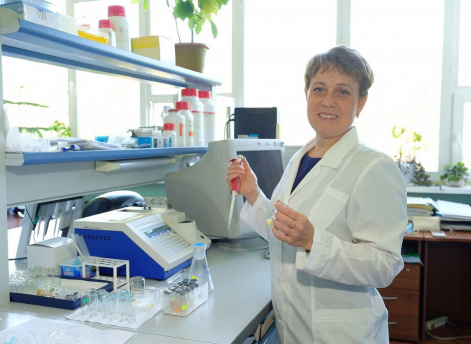Bacterial enzymes can help detect toxic compounds in food
30 June 2021 г.

Soil and associated plant products can accumulate compounds which are potentially harmful to humans. When toxicants enter living organisms, they interfere with molecular processes and trigger a cascade of unpredictable effects leading to health problems. Therefore, one of the priorities is to assess the level of contamination and to develop highly sensitive, inexpensive and relatively simple methods of analyzing the environment and food for the presence of toxic substances.
Scientists of the Federal Research Center “Krasnoyarsk Science Center SB RAS” together with colleagues from the Siberian Federal University, have developed bioluminescent biosensors for assessing toxic pollution in soil and food. Enzymes which are highly sensitive to all kinds of toxicants are used as recognizing elements of such sensors.
The biosensor is based on bioluminescent enzymes of luminous bacteria. The analysis itself allows one to detect changes in the intensity of the enzyme luminescence under the influence of toxic admixtures. The quality of the analyzed samples is estimated by the strength of the effect on the light signal. Suppression of luminescence of the enzymes is proportional to the amount of toxic substances in samples. This reaction is fast, easy to perform, and very sensitive to various toxic chemicals found in the environment and food.
The developed bioluminescent sensors are capable of recognizing food contaminants such as heavy metals (zinc, copper, mercury and chromium ions) and pesticides (hexachlorane, organochlorine pesticides, diazinon, deltamethrin, cypermethrin and copper sulfate) at their maximum permissible concentrations.
Scientists tested biosensors on samples of tomatoes and cucumbers with deliberately injected pollutants. The added toxicants reduced the luminescence of the biosensors.
“The analysis of the content of toxic substances in complex media requires overcoming a number of difficulties, including the consideration of the effect of natural components in the sample. The developed algorithm makes it possible to take into account this influence, and even to minimize it to achieve more accurate results. Such biosensors are applicable for solving a number of problems, for example, for comprehensive assessment of the safety of fruit and vegetables. The uniqueness of the scheme for constructing enzymatic sensors developed lies in its versatility. Indeed, using this algorithm, it is possible to develop a series of different biosensors based on various enzymes. Since enzymes are selectively sensitive to pollutants, this will make it possible in the future to develop a complex of biosensors for ecotoxicology, allowing one to quickly and accurately answer the question of the presence of toxic substances in samples, " said one of the authors of the study, Elena Yesimbekova, Candidate of Biological Sciences, Senior Researcher at the Institute of Biophysics FRC KSC SB RAS.
Scientists note that the developed biosensor is mobile, it is small and weighs no more than 300 grams. Therefore, it can be used for analyses both in the laboratory and in the field. All the materials and reagents used to make the sensor are readily available and relatively inexpensive. This allows the development to be used as an early warning and safety assessment system for fruit and vegetables.
The work was carried out within the framework of a joint project of the Russian Foundation for Basic Research, Government of the Krasnoyarsk Region and Krasnoyarsk Regional Science Foundation, No. 20-44-242001.
Share:
